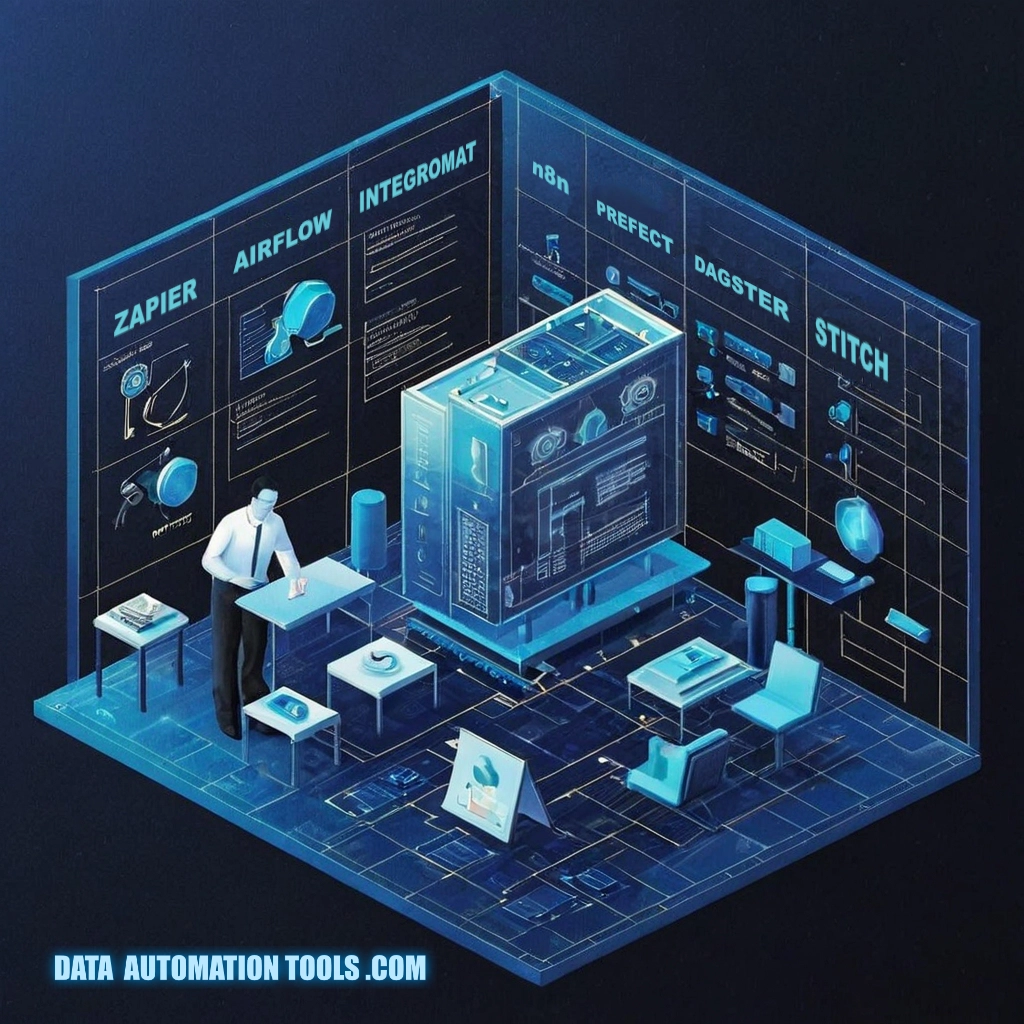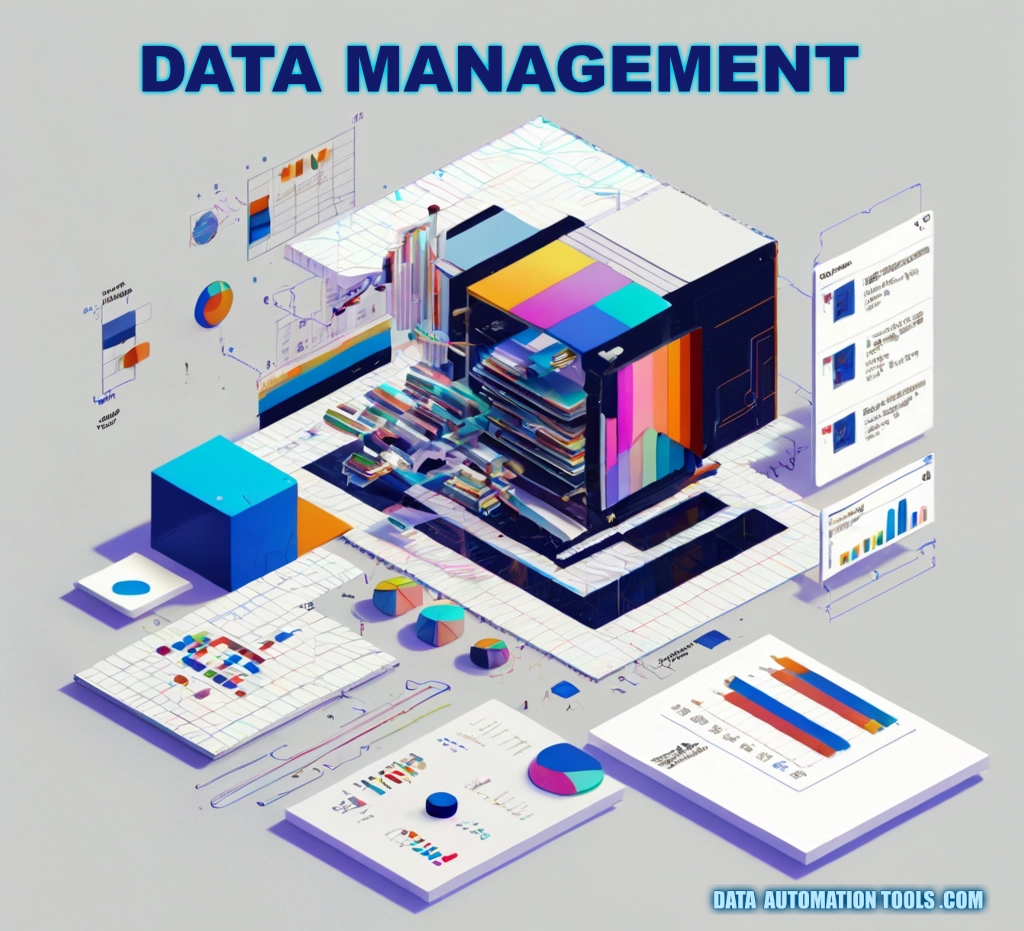Our data automation tool comparison sorts the multilayered landscape of data tools into an easy-to-grasp chart. Because to be fair, when you start evaluating automation tools as a developer, the landscape can feel like a patchwork of overlapping promises. Each tool—whether Airflow, Prefect, Dagster, dbt, Fivetran, Zapier, or n8n—sits at a slightly different layer of the stack, with different tradeoffs in complexity, scalability, and developer ergonomics. Let’s break it down.

Apache Airflow has long been the heavyweight in workflow orchestration. It’s Python-based, battle-tested, and widely adopted in enterprise data engineering. Airflow shines when you need DAGs (Directed Acyclic Graphs) to model complex, interdependent pipelines with fine-grained scheduling. Its extensibility through custom operators is unmatched, but setup can be clunky. The learning curve is steep, and managing Airflow’s infrastructure (webserver, scheduler, workers) adds operational overhead. It’s best for teams with strong DevOps maturity and a need for highly controlled, production-grade pipelines.
Prefect evolved as a more developer-friendly alternative. Like Airflow, it models workflows as Python code, but with a modern API, fewer boilerplate constructs, and better support for dynamic workflows. Prefect Cloud (or Prefect Orion, its open-source scheduler) reduces infrastructure headaches, offering built-in observability, retries, and logging without the heavy lift of configuring Airflow. If you like “orchestration as code” but want something less brittle and easier to adopt, Prefect is a sweet spot.
Dagster takes a more opinionated approach, treating pipelines as software assets with type-checked inputs and outputs. It emphasizes data quality and developer tooling—think testing, lineage tracking, and asset awareness baked in. Dagster can feel more structured (sometimes restrictive) compared to Airflow or Prefect, but its design is excellent for teams that value maintainability and want their automation pipelines to be first-class citizens in the development lifecycle.
On the ingestion side, tools like Fivetran and Stitch focus on automating EL (Extract and Load). Instead of writing custom connectors, you configure integrations via UI or API, and the service manages schema evolution, incremental syncs, and reliability. These are SaaS-first and cost-based on volume, so they remove engineering burden at the expense of flexibility. For many service-oriented businesses, they deliver enormous value by eliminating the “ETL plumbing” work.
For transformation, dbt (Data Build Tool) dominates. It brings software engineering best practices—modularity, testing, documentation—to SQL transformations. Developers write models as SQL queries, which dbt compiles into dependency graphs and executes in the warehouse. It doesn’t handle ingestion or orchestration alone, but when paired with a tool like Fivetran + Airflow/Prefect, dbt is the backbone of modern ELT pipelines.
Then there’s the no-code/low-code tier: Zapier, Make (formerly Integromat), and n8n. These platforms abstract pipeline logic into visual flows, offering thousands of prebuilt connectors to SaaS tools. They’re invaluable for quick wins: syncing leads from a web form into a CRM, pushing alerts into Slack, or automating file transfers. For developers, Zapier often feels limiting (logic is opaque, debugging is minimal), but n8n, being open-source and Node.js-based, gives you more flexibility with custom functions. These tools can complement, not replace, your heavy-duty data pipelines by covering the “last mile” of automation.
In practice, many teams blend these tools. A data-driven SaaS might use Fivetran for ingestion, dbt for transformation, Prefect for orchestration, and Zapier for lightweight business-side automations. The right choice depends on your pain point: Airflow for complexity, Prefect for ease of use, Dagster for type-safety and lineage, Fivetran for ingestion, dbt for transformation, Zapier/n8n for quick SaaS glue.
Data Automation Tool Comparison (Quick Guide)
- If you need orchestration at scale and have DevOps: Airflow.
- If you want Pythonic, easy-to-test flows with managed option: Prefect.
- If you want data-first, type-safe, testable pipelines: Dagster + dbt for transformations.
- If ingestion is your bottleneck: Fivetran / Stitch (managed) for fast connector coverage.
- If you need open-source visual automation you can host: n8n or Huginn.
- If you want code-first serverless automation: Pipedream.
- For event backbone vs processing: Kafka = transport/retention; Flink = stream compute.
- For quick business automations by non-developers: Zapier or Make.
Data Automation Tool Comparison Chart
| Tool | Primary role | Core features | Pros (developer-focused) | Cons (developer-focused) | Best for | License | Self-hostable? |
|---|---|---|---|---|---|---|---|
| Apache Airflow | Workflow orchestration / scheduler | Python DAGs, operators, scheduling, web UI, many operators/plugins | Mature ecosystem; powerful scheduling & dependency control; wide integrations | Heavy infra & ops; verbose DAG boilerplate; weaker data-first abstractions | Large-scale batch ETL, enterprise orchestration | Apache 2.0 | Yes |
| Prefect | Orchestration (Python-first) | Flows/tasks, Pythonic API, Prefect Orion/Cloud, hybrid agents | Lightweight dev experience; easy local->prod; managed option; good retries/observability | Less data-aware (no asset model); smaller operator ecosystem than Airflow | Agile Python-driven pipelines, API-based jobs | Apache 2.0 (core) | Yes |
| Dagster | Data-aware orchestration / “data as code” | Ops/assets, Dagit UI, lineage, type hints, materializations | First-class data lineage; strong testability & typing; great dev tooling | Opinionated (learning curve); Python-only; some infra complexity for large clusters | Data platforms, analytics engineering, asset-driven pipelines | Apache 2.0 | Yes |
| dbt | SQL transformation / transformation-as-code | SQL models, macros, testing, docs, dependency graph | Brings software practices to SQL; easy testing & docs; integrates with warehouses | Only transforms in-warehouse (no ingestion/orchestration); SQL-centric | Transformations in ELT stacks, analytics engineering | Open Source (Apache 2.0 for dbt Core) | Yes (CLI/self-hosted CI) |
| Fivetran | SaaS data ingestion (ELT) | Managed connectors, automated schema handling, incremental syncs | Zero-maintenance ingestion; broad connector catalog; reliable incremental loads | SaaS-only; cost scales with volume; less flexible for custom connectors | Fast ingestion to data warehouse | Proprietary (paid) | No (managed) |
| Zapier | No-code SaaS automation | Visual zaps, connectors, triggers/actions | Extremely easy for non-devs; many app integrations; low setup time | Limited for complex logic; opaque debugging; rate/volume limits | Business automations, marketing, small integrations | Proprietary (SaaS) | No |
| Pipedream | Serverless automation / code-first workflows | Event-driven serverless code (JS/Python), npm access, secrets | Write real code in workflows; fast iteration; near-real-time triggers | Hosted-first (no true self-hosting); pricing with high volume | API-heavy automations, realtime webhooks, code-centric automations | Proprietary (freemium) | No |
| Huginn | Self-hosted automation/agents | Event agents, HTTP/Parsing, custom agents (Ruby) | Fully self-hostable; highly customizable; privacy-first | Dated UI; hands-on maintenance; steeper setup for non-Ruby devs | Privacy-sensitive, self-hosted automations, custom watchers | MIT (open source) | Yes |
| Stitch | SaaS data ingestion (ELT) | Connectors, incremental replication, target warehouses | Simple ingest, engineer-friendly connectors; low-touch | Limited transformation capabilities; cost scales; SaaS only | Quick ingestion into warehouses for analytics teams | Proprietary (part of Talend) | No |
| n8n | Visual automation + developer extensibility | Visual node editor, JS scripting in nodes, custom nodes, webhooks | Open-source, self-hostable, code-integration (JS), flexible | Self-hosting requires ops; UI less polished than top SaaS; scaling tuning needed | Developer-driven automation, internal integrations, privacy-conscious teams | Fair Code (open core) | Yes |
| Apache Kafka | Distributed event streaming / durable log | Topics/partitions, producers/consumers, retention, connectors | Extremely high throughput & durability; replayable streams; strong ecosystem | Ops complexity; not a processor (needs consumers/processors); partitioning complexity | Event backbone, stream buffer, pub/sub, replayable events | Apache 2.0 | Yes |
| Apache Flink | Stateful stream processing engine | Event-time processing, windowing, exactly-once, state backends | Powerful stateful, event-time semantics; low-latency processing; fault-tolerance | Steeper learning curve; complex state management; infra weight | Real-time analytics, stream joins, stateful processing | Apache 2.0 | Yes |
| Make (Integromat) | Visual automation / advanced no-code | Visual scenario builder, complex data mapping, iterators | Powerful data handling visually; cheaper for some high-volume flows | Not open-source; debugging large flows can be painful; limited self-host | Complex SaaS glue where non-devs need visual tools | Proprietary (SaaS) | No |




